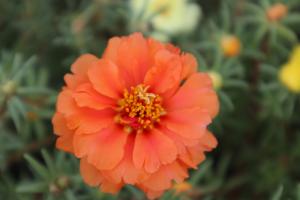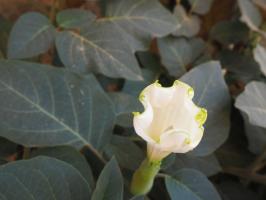1、 Curing method
1. Matrix selection: Phoenix flower likes soil with strong air permeability, good drainage and rich organic matter. When preparing soil, nutrient soil, rotten leaf soil and a small amount of small stones can be mixed, and then planted
2. Temperature management: the suitable temperature for Phoenix flower growth is 20 ℃ - 31 ℃. It doesn't like cold weather. It needs heat preservation when the temperature is lower than 9 ℃ in winter and cooling when the temperature is too high

3. Water management: Phoenix flower is drought resistant and afraid of ponding. Therefore, it does not need too much water during its growth. It can be watered appropriately according to the weather conditions. Each watering should not be excessive. If there is water in the basin, it will affect the root growth
4. Nutrient management: comprehensive fertilizer can be applied at the seedling stage, and less nitrogen fertilizer can be applied to promote growth. Apply fertilizer again before flowering and stop applying fertilizer before autumn

2、 Breeding skills
1. Sowing: the seed skin of Phoenix flower is very thick and the water absorption is poor. Soak the seed in hot water with high temperature before planting, and continue to soak for one to two days after cooling. Water should be changed frequently during soaking to prevent seeds from rotting. Generally, seeds will germinate in succession about seven days after sowing
2. Wintering: when the temperature is lower than 9 ℃ in winter, it will affect the growth of Phoenix flower. If the situation is serious, the whole plant will freeze to death. When breeding in winter, we should pay attention to thermal insulation. We can wrap the grass curtain on the main branches of the tree to increase the temperature

3、 Diagnosis and treatment problems
1. Rotten roots: Phoenix flower is suitable for growing in soil with good drainage. Ponding caused by untimely drainage will rot the roots
2. Noctuid moth: it is easy to appear in dry and hot weather and lives by eating the leaves of Phoenix flower. The treatment is most effective in the larval stage. It can be sprayed on the leaves before the sun comes out after the mixture of insect powder, phosphorus powder and dimethoate powder

4、 Other issues
1. Poisonous: the seeds of Phoenix flower are poisonous. Don't let children play with the seeds. Pets should also stay away from them to avoid causing trouble as far as possible
2. Florescence: the florescence of Phoenix flower is around June and July every year. The flowers are highly ornamental. After entering the florescence, they also need reasonable water replenishment


 jackfruit
jackfruit snake plant
snake plant hibiscus
hibiscus hydrangea
hydrangea lavender
lavender Green roses climb al...
Green roses climb al... If you don't pay att...
If you don't pay att... Management of four g...
Management of four g...

































